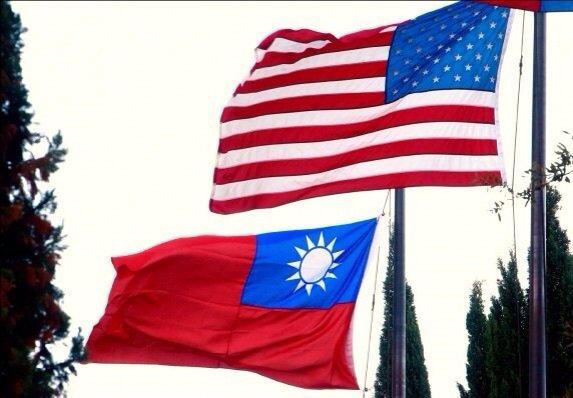
While the 13th National People’s Congress in China earlier this month grabbed international attention—particularly the constitutional amendment eliminating presidential term limits—other important developments in cross-Straits relations also took place.
Premier Li Keqiang vowed that there’s no tolerance for Taiwanese independence. He also promised ‘friendship’ and an expanding relationship across the Taiwan Straits in which Taiwan would play a part in the ‘nation’s’—that is, Beijing’s—rejuvenation efforts. In other words, independence is out of the question, but there’s an option for a beautiful and prosperous future together.
No wonder US President Donald Trump’s signing last week of the Taiwan Travel Act stirred Beijing’s anger and invited promises of retaliation and the ‘punishment of history’. The act allows unrestricted two-way travel between the US and Taiwan for American and Taiwanese officials.
Chinese state media reminds everyone that article 8 of China’s 2005 anti-secession law states that Beijing will pursue ‘non-peaceful means and other necessary measures’ to prevent Taiwan’s secession. China has been consistently trying to limit Taiwan’s international space. For that reason, opening a channel for official exchanges with the US is an unwanted development.
Late last year, a Chinese diplomat in Washington DC, Li Kexin, warned that the day a US warship visits Taiwan would be the day that the People’s Liberation Army would reunite Taiwan with China by force. Since Xi Jinping became president, Beijing has pushed a more assertive regional strategy that includes further encircling Taiwan.
In recent years, the PRC’s project to limit Taiwan’s diplomatic space has accelerated. For example, Panama—a Taiwanese diplomatic partner since 1912—cut ties with Taiwan last year. As detrimental as the incident was for Taipei, by no means was it exceptional.
In 1969 there were 71 countries that recognised Taiwan and 48 that recognised the People’s Republic of China. Currently, Taiwan has 20 diplomatic allies, whereas the PRC has 175.
Not only have Taiwan’s bilateral relations suffered, but also its ability to participate in or observe multilateral fora. Beijing is busy vetoing Taiwanese delegates’ participation in inter-governmental organisations and other gatherings where Taiwan has been an observer.
Recently, INTERPOL and the International Civil Aviation Organization refused Taipei’s request to attend their general assemblies. Even in the international business and industry worlds, Taiwan’s presence is increasingly problematic. The Kimberly Process—a gathering of the diamond industry—met in May 2017 in Australia. The Chinese delegation forced the exclusion of the Taiwanese team.
Beijing’s goal is to eliminate international recognition that Taiwan is an independent actor with the right to have its own representation. Instead, the PRC wants Taiwan to be treated by the international community as a purely ‘domestic matter’.
The Taiwan Travel Act complicates Beijing’s plan. The US is determined to support Taiwan’s participation in the international community. Bilateral relations have gained a new spin since Donald Trump assumed the presidency, starting with him accepting a congratulatory phone call from Taiwanese President Tsai Yin-wen.
For a while, it was thought that this represented a sharp policy change in cross-Straits relations and an early signal that Trump would be more assertive in the US relationship with China. However, President Trump quickly reaffirmed his commitment to the One China policy.
His polar swings between embracing and confronting the PRC have now become his ‘signature’ policy—to uncertain effect. In mid-2017, for example, Trump approved a US$1.4 billion arms sale to Taiwan. Predictably that angered Beijing.
‘Displeasing’ or ‘angering’ China is a test the PRC leadership may want all nations to consider when thinking through their actions. Trump certainly seems to see beyond this, perhaps because he too is comfortable using ‘the theatre of emotions’ in his own statecraft and negotiations.
This year began with growing tensions in cross-Straits ties, including a recent spat over new commercial air routes launched by China, and the increasing number of patrols by Chinese long-range bombers and spy planes around Taiwan. Taipei counted some 25 such drills by Chinese warplanes between August 2016 and December 2017.
While international attention has been preoccupied with North Korea and the South China Sea, the Taiwan issue remains no less a flashpoint. In fact, arguably it’s the issue that China feels strongest about.
Despite a limited diplomatic network, Taiwan remains a crucial player in maintaining the regional balance. Taiwan also remains a democracy with a successful and vibrant high-technology economy. It’s considerably more important strategically than the scattered artificial islands in the South China Sea.
A scenario where China uses force against a democratic Taiwan would be unwelcome across the region. It would end speculation about the kind of China the world faces under President Xi’s leadership in a way that would destroy the narrative of a shared ‘China dream’.
A scenario where Taiwan remains a democratic, high-technology society with strengthened relationships in North Asia, Europe, the US and elsewhere—while remaining within the diplomatic ‘One China’ framework—is one worth contemplating.
Just days after the signing of the travel act, US senior official Alex Wong, Deputy Assistant Secretary of State for East Asian and Pacific Affairs, met with President Tsai Yin-wen in Taipei. Wong reassured the Taiwanese that US support for Taiwan has never been stronger. The travel act is a significant development in cross-Straits relations. Let’s prepare ourselves for the return of Taiwan as a strategic and security issue that matters.